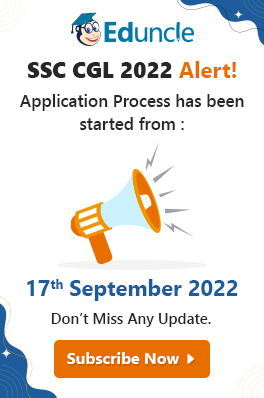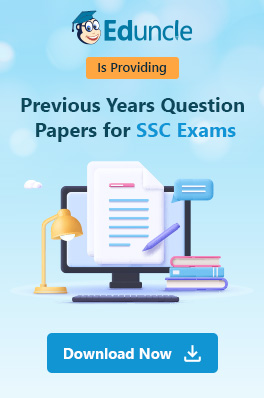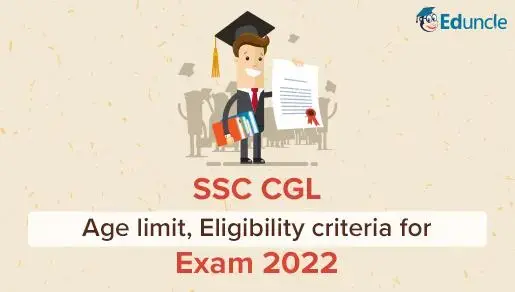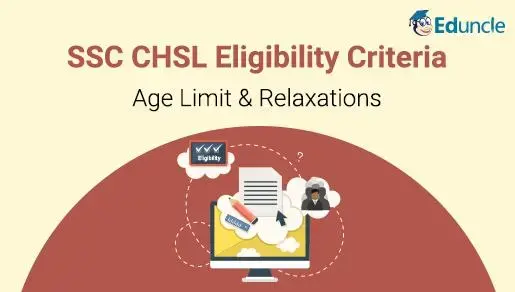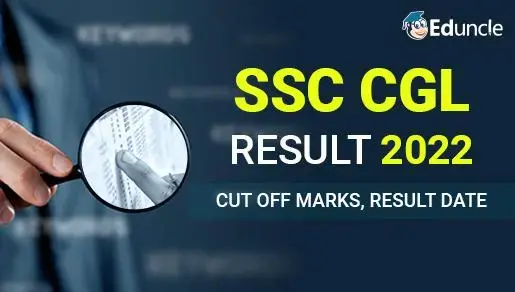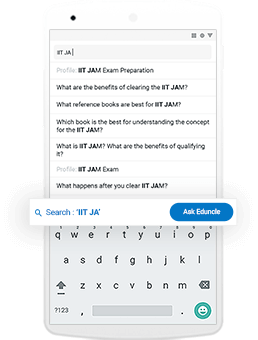
Quantitative Aptitude is one of the indispensable parts of competitive exams. It is one of the most important scoring sections in various SSC Exams like SSC CGL, SSC CHSL, SSC CPO, SSC GD, etc. The weightage of Quantitative Aptitude for the SSC CGL Exam is even more as it is a part of both Tier 1 and Tier 2.
Quantitative Aptitude for SSC Exams can prove to be the most important factor in your selection as an SSC Officer. So, naturally, it requires more preparation time and practice as compared to the other ones.
Why is Scoring Well in Quantitative Aptitude for SSC Necessary?
Pattern of Quantitative Aptitude Section for SSC Exams
Quantitative Aptitude for SSC CGL Exam
Quantitative Aptitude for SSC CHSL Exam
Quantitative Aptitude for SSC CPO Exam
Quantitative Aptitude for SSC GD Constable Exam
Important Topics Asked in SSC Exams
Books for the Quantitative Exam for SSC Exams
Tips to Score Better in Quantitative Aptitude for SSC Exams
Paper Attempting Tips for Quantitative Aptitude for SSC Exams
Why is Scoring Well in Quantitative Aptitude for SSC Necessary?
If you score well in the Quantitative Aptitude for SSC Exams, there are high chances that your overall score will be good, and you may get high profile post.
To score well, one should have a good command over the basic concepts. Also, you should be able to make fast calculations using short tricks and formulas.
It's a fact that practice is the key to score well in this section. You must get complete clarity on the fundamental mathematical concepts and practice with the help of solved questions based on that.
This blog will provide you a broad perspective on approaching the Quant Section for the SSC Exams.
Pattern of Quantitative Aptitude Section for SSC Exams
For better preparation, it is very important to get details of the exam pattern first. Below, you can check the paper pattern, difficulty level, and expected number of questions in every SSC Quantitative Aptitude section.
Get Free Guidance on SSC by Eduncle Experts
Quantitative Aptitude for SSC CGL Exam
In Tier 1, there will be 25 questions from the SSC CGL Quantitative Aptitude section. Topic-wise questions from previous years are given in the table below.
| SSC CGL Quantitative Aptitude Topic |
No. of Questions (2019) |
No. of Questions (2020) |
| Arithmetic |
7 |
8-9 |
| Algebra |
6 |
2-3 |
| Trigonometry |
3 |
2-3 |
| Geometry |
4 |
3-5 |
| Number System |
1 |
3-4 |
| Data Interpretation |
4 |
5 |
In Tier 2, Quantitative Aptitude consists of 100 multiple-choice questions, and each question carries two marks. In this exam, 0.50 marks are deducted as penalty for each wrong answer.
The duration of this exam is 2 hours.
Get the complete syllabus of Quantitative Aptitude for SSC CGL 2022 here - SSC CGL Quantitative Aptitude Syllabus.
Quantitative Aptitude for SSC CHSL Exam
The weightage of Quant section in SSC CHSL is 50 marks, which consists of 25 questions. There will be negative marking of ¼ marks for each wrong answer.
| Topic |
No. of Questions |
| Algebra |
3 |
| Percentage/Profit, Loss & Discount |
3 |
| Mensuration |
3 |
| Geometry |
2 |
| Trigonometry |
3 |
| Ratio/Allegation/Average |
1-2 |
| Time and Work |
1-2 |
| Data Interpretation |
3-4 |
| Simple Interest & Compound Interest |
1 |
| Time, Speed and Distance |
1-2 |
| Co-ordinate Geometry |
1 |
| Number System |
2 |
Get the SSC CHSL syllabus here - SSC CHSL Quantitative Aptitude Syllabus
Quantitative Aptitude for SSC CPO Exam
SSC SI & ASI written exam includes Paper I (Pre) & Paper-II (Mains). Both papers are conducted online.
In Paper I, there are 50 questions of 50 marks in Quantitative Aptitude with negative marking of 0.25 marks for every wrong answer. The topic-wise questions for the last year's paper is given below:
| Topic |
No. of Questions |
| Data Interpretation |
10 |
| Geometry |
10 |
| Trigonometry |
5 |
| Algebra |
4 |
| Trigonometry |
3 |
| Time, Speed & Distance, Work & Time |
9 |
| Profit, Loss & Discount |
4 |
| Average, Mixture, Allegation |
3 |
| SI/CI & Percentage |
4 |
| Ratio & Proportion |
1 |
Get the complete syllabus for the SSC CPO here - SSC CPO Syllabus 2022.
Quantitative Aptitude for SSC GD Constable Exam
The Quantitative Aptitude for SSC GD Exam has 25 questions of 25 marks. Matriculation level questions will be asked in the exam.
The topics which can be asked in the SSC GD Exam are:
Averages
Decimals and Fractions
Fundamental arithmetical operations
Percentages, Profit & Loss
Time & Distance; Time & Work
Number Systems
Mensuration
Computation of Whole numbers
Get the complete syllabus for the SSC GD Constable Exam here- SSC GD Syllabus 2022.
Important Topics Asked in SSC Exams
There are certain topics whose weightage for the SSC Exams is quite higher than the other ones. To maximize your score, you need to prepare these topics very diligently. Below are some topics from where questions are asked.
Trigonometry in SSC Exams
This topic is based on formulas. You need to remember as many formulas as you can. Below is the standard table for the values of different angles in Trigonometry.
Important Pythagorean Identities
sin2 θ + cos2 θ = 1
tan2 θ + 1 = sec2 θ
cot2 θ + 1 = cosec2 θ
Download Free SSC Study Plan & Boost your Learning
Geometry for SSC Exams
This section plays quite an impactful role in SSC Exams. The level of questions can be easy but tricky. You can focus on a few important topics, such as -
Properties of Lines and Angles:
Straight-line: A straight line has neither start nor end and is of infinite length.
Acute Angle: The angle between 0° and 90° is acute angle.
Obtuse Angle: The angle between 90° and 180° is obtuse angle.
Right Angle: The angle that is 90° is a Right angle.
Supplementary angles: If the sum of the two angles is 180°, then the angles are called supplementary angles.
Complementary angles: If the sum of the two angles is 90°, then the two angles are called complementary angles.
Vertically opposite angles: When two lines intersect, the angles formed opposite each other at the point of intersection are vertically opposite angles.
Perpendicular lines: When there is a right angle between two lines, the lines are called perpendicular to each other.
Parallel lines: The line which does not intersect with each other in the entire space is called parallel lines.
Properties of Triangle:
Sum of all the three angles is 180°.
The sum of any two sides is always greater than the length of the third side.
The difference between any two sides is always less than that of the third side.
An exterior angle is equal to the sum of the interior opposite angles.
The side opposite to the greatest angle is the greatest side, and the side opposite to the smallest angle is the shortest side.
The area of a triangle is given by: 1/2XBaseXHeight.
Properties of Rectangle:
Each of the interior angles of a rectangle is 90°.
The diagonals of a rectangle bisect each other.
The opposite sides of a rectangle are parallel and equal.
A rectangle whose side lengths are a and b have area= a X b.
A rectangle whose side lengths are a and b have perimeter=2a+2b.
Properties of Circle:
If two circle chords are equal, their corresponding arcs have equal measure.
Equal arcs subtend equal angles at the centre.
A line from the centre and perpendicular to a chord bisects the chord.
Equal chords of a circle are equidistant from the centre.
When two circles touch, their centres, and point of contact are collinear.
Two tangents drawn on a circle from the point outside are equal in length.
A tangent to a circle is at a right angle to the radius at the point of contact.
Data Interpretation
Questions from data interpretation contain figures and graphs. This section is a scoring one but consumes a lot of time. To solve this section, you have to improve your speed of calculations. DI Questions in SSC Exams can be faced through various forms like -
Tabular Charts
Bar Graphs
Pie Charts
Mixed Graphs
Keep in your Mind that 100% is equal to 360 Degrees in the circular Graph or Chart. The questions will be based on Percentage, Average, Value, and Ratio concepts.
Algebra in SSC Exams
Practice questions from algebra and try to solve them in mind rather than on paper. It will increase your thinking power and save your time to solve these questions.This will not only improve your thinking power but also save time in the examination.
Here are some useful formulae for Algebra.
(a + b)2 = a2 + b2 + 2ab.
(a – b)2 = a2 + b2 – 2ab.
a2 – b2 = (a + b) (a – b)
(a + b)3 = a3 + b3 + 3ab (a + b)
(a – b)3 = a3 – b3 – 3ab (a – b)
a3 + b3 = (a + b) (a2 + b2 – ab)
a3 – b3 = (a – b) (a2 + b2 + ab)
(a + b + c)2 = a2 + b2 + c2 + 2 (ab + bc + ca)
Free Download SSC Sample Study Notes
Profit, Loss & Discount in SSC Exams
It is also an important section from which questions are asked in the exam. Here are some formulas which can be helpful for solving questions from this section –
The price at which an article is sold is called its selling prices, S.P.
The price at which an article is purchased is called its cost price, C.P.
Profit/gain= SP-CP
Profit%= (Profit/CP) X100
SP= 100/ (100+gain%) X CP
CP= 100/ (100+gain%) X SP
If the overall cost price exceeds the selling price of the buyer, then he is said to have incurred a loss.
Loss= CP- SP
Loss %= (Loss/CP) X CP
SP= (100-loss%)/100X CP
CP= 100/ (100- loss%)X SP
Percentage in SSC Exams
This section is also time-consuming but possesses a good weightage of marks. You have to keep in mind the following –
If the price of commodity increases by R%, the reduction in consumption to not increase the expenditure is: [R/(100+R)] X 100%.
If the price of a commodity decreases by R%, the increase in consumption so as not to decrease the expenditure is: [R/(100-R)] X 100%.
Books for the Quantitative Exam for SSC Exams
Good books and study material play an important role in any exam preparation. In SSC, practice is a must for the Quantitative Aptitude, which is impossible without reliable books.
The important books for SSC Exam can be checked by following the links given below:
| Exams |
Books |
| SSC CGL |
|
| SSC CHSL |
|
| SSC CPO |
|
| SSC GD |
Tips to Score Better in Quantitative Aptitude for SSC Exams
Many aspirants find it difficult to score well in SSC Exams due to a lack of practice and conceptual knowledge. So, here we are going to provide you some useful tips to maximize your score.
The rudimentary knowledge creates the base for the higher level of studies. Focus on the basics and formulas of the Quantitative Aptitude.
Many questions are repeated every year, so try to solve the previous year's papers.
Take every mock test very seriously and solve them in one go within the time constraint.
The knowledge does not help until you practice it. Practice as much as you can so that solving the questions in the exam becomes easy for you.
Apply short tricks in the mock tests for fast calculations to focus on the other sections.
| Download Free SSC Material for All SubMTScts [Trusted & Recommended by 4600+ Selected Students] |
| Updated Syllabus for All SubMTScts |
| Sample Theory Notes |
| Model Test Papers with Solution (Paper 1 & 2) |
| 5 Previous Exam Papers with Answer Keys |
| Complete Study Plan for Paper 1 |
| Paper Analysis by Eduncle Experts |
| Personalized Guidance by Subject Experts |
Paper Attempting Tips for Quantitative Aptitude for SSC Exams
The SSC Exams are conducted within the limited time constraint, so it is essential to have a strategy to attempt the paper in an effective manner so that you can maximize your score. The following tips will help you to attempt the paper in a better way:
Reach the exam centre 1 hour before the commencement of the exam.
Analyze the whole paper first and then attempt the easy questions first.
After the easy questions, you can go for the typical questions in the ascending order of difficulty.
In the last 5-10 minutes, check the questions in which you have confusion and solve them accordingly.
Don't waste 2 more minutes on any question. If you are unable to solve any question, leave it.
Focus more on accuracy than the number of attempts. This is equally important along with the number of attempts as there is negative marking in SSC Exams.
Take proper rest before the exam day and revise the formulas.
Recommended Reads:
SSC General Intelligence and Reasoning
If you want a job through SSC Exams, you need to prepare Quantitative Aptitude very well. You can take help from some coaching institutes or go for online studies.
You can share and comment below your queries and views. We will be glad to solve your queries as soon as possible.
Thank You!

